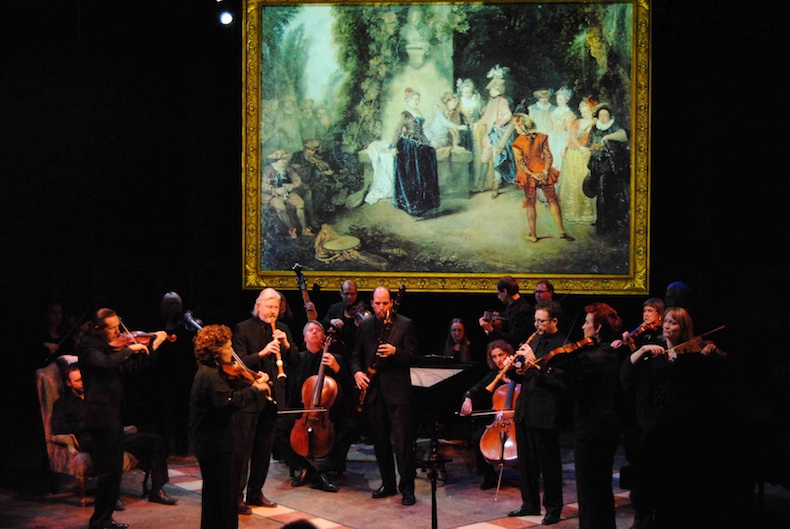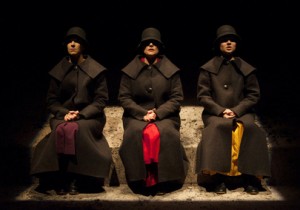
Everyone knows how spoiled we Torontonians are for fine art music and opera. A list of great performances would, by my estimation, have about four-dozen entries. But what about the truly exceptional — the very best and the very worst? 2012 left me with a half-dozen treasures.
- Classical Music 101: What Does A Conductor Do? - June 17, 2019
- Classical Music 101 | What Does Period Instrument Mean? - May 6, 2019
- CLASSICAL MUSIC 101 | What Does It Mean To Be In Tune? - April 23, 2019
There are two opera presentations that deserve special mention — neither of them traditional mainstage productions.
Nearly a year ago, Tafelmusik made a bold leap into the operatic world by presenting George Frideric Handel’s Hercules — one of only two operas he wrote in English.
It was Jeanne Lamon’s way of declaring a happy 30th anniversary as music director to herself, her musicians and her audiences. The result, semi-staged at Koerner Hall by longtime Tafelmusik collaborator, Opera Atelier’s Marhsall Pynkoski, was spectacular.
It was a striking reminder of Lamon’s many talents besides wielding a bow and violin. It is easy enough to take a person for granted after seven or eight years in a relationship, much less 30. And here was Lamon arriving from a metaphoric makeover, wearing a new frock, declaring, well hello there, boys and girls.
It made Lamon’s announcement this fall that she is retiring all the more bittersweet. I’m hoping that her eventual change of role will result in more special projects like Hercules.
Besides showcasing some of this country’s finest singing actors — quite frankly, I could get lost inside Allyson McHardy’s voice for months — Hercules was a prime example of how flexible opera is. When performed at a high level, the combination of music and text and melody doesn’t necessarily need elaborate costumes and sets to grab and run away with our imaginations.
That point was brought home again in late May, when young opera director Joel Ivany and his Against the Grain Theatre co-conspirators brought us a mesmerising production of Benjamin Britten’s Turn of the Screw.
How is it that a chamber opera mounted in a small university theatre and accompanied on a beat-up old upright piano can turn into one of the great achievements of the year?
That’s the magic of a great director, amazing singers, an incredible pianist and, as the legendary Marlene Dietrich would not have hesitated to point out, clever lighting — one of the least-appreciated weapons of stagecraft.

Another production that hit all the right notes was Queen of Pudding’s Beckett: Feck It! which stretched the boundaries of what we think of as theatre and music back in February. In my review, to which I have nothing to add, I wrote, “Laughter mixes with pain, and darkness with light, reflecting in tidy little packages the borderless mess that is the human condition.”
There were wonderful surprises outside of the opera and musical theatre realms, as well.
Tafelmusik’s House of Dreams stands out.
As with the Galileo Project, also conceived by longtime Tafelmusik bass player Alison Mackay, the musicians played everything from memory while moving about the stage in Pynkosky’s subtle choreography. A big screen showed images of Old Master paintings while a narrator wove together the story in which the music was the glue.
Presenters have been trying to blend the aural and visual for many years, but it rarely works as seamlessly as in Tafelmusik’s House of Dreams. A lot of credit goes to preparation and workshopping supported by the Banff Centre.
Raccoons, coyotes, red foxes and hawks may be thriving in Toronto, but vocal recitals are an endangered species.
The brilliant Ian Bostridge selling half the seats at Koerner Hall? Really? Our great, young Canadian singers not selling out 341 seats at Glenn Gould Studio under the stewardship of Roy Thomson Hall? Really?
Even Canada’s greatest international song master, baritone Gerald Finley, couldn’t sell out Koerner Hall on July 18 for a Toronto Summer Music Festival recital that still raises goosebumps on my arms five months later.
In an age of computer-generated eagles carrying off toddlers and quasi-immersive 3D movies with pounding soundtracks, the small-detail craft of the art song seems all the more precious. And, quite frankly, we could count all the living artists who do it exceptionally well on the fingers of our two hands.
Fortunately, the solo piano recital is alive and well in Toronto. There were a dozen great ones in town over the past year, but one stands out for me: Piotr Anderszewski’s all-Bach effort at Koerner Hall less than a month ago.
The lesson this intense, eccentric pianist reminded me of was how a great artist can stray away from accepted norms of interpretation — the ones a critic would use as markers — and captivate a listener by casting the familiar into an unfamiliar light.
Anderszewski took a recital’s worth of Bach’s more lyrical pieces, moulding each into a multifaceted jewel of thoughtful expression.
The output of J.S. Bach is a monumental challenge as well as bottomless source of inspiration. His instrumental music is a collection of mathematically-organized notes that add up to a blank slate. What will the instrument be? What will the tempo be? How loud or soft should we play? Should repeats be embellished or left as they are?
One can, without exaggeration, spend a lifetime answering these and other questions. A musician can play the Goldberg Variations at least 1,024 different ways — or is it 32,768 different ways?
Let’s say it’s 1,024 different ways. If a pathologically obsessive-compulsive pianist were to play for eight hours a day, seven days a week, it would take 192 days — six months — to play the Goldbergs that many times, and never once repeat the same interpretation.
Which of these is the valid one?
Any and all that cause me or you or both of us to completely forget who and where and when we are for a passing moment.
In that answer lie all the beauty and joy and frustration and tears that this world has to offer.
Every year at this time, I’m reminded what a gift it is to be able to experience even a little slice of it.
John Terauds
- Classical Music 101: What Does A Conductor Do? - June 17, 2019
- Classical Music 101 | What Does Period Instrument Mean? - May 6, 2019
- CLASSICAL MUSIC 101 | What Does It Mean To Be In Tune? - April 23, 2019



